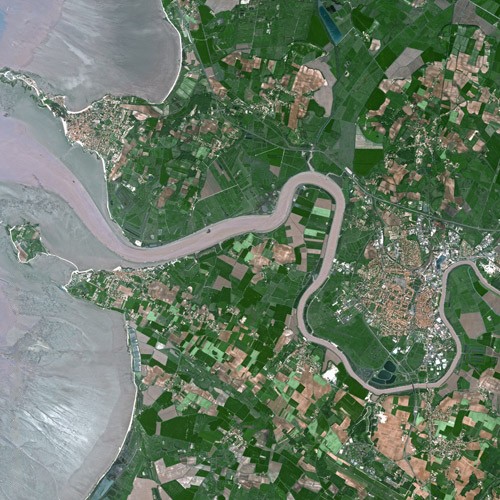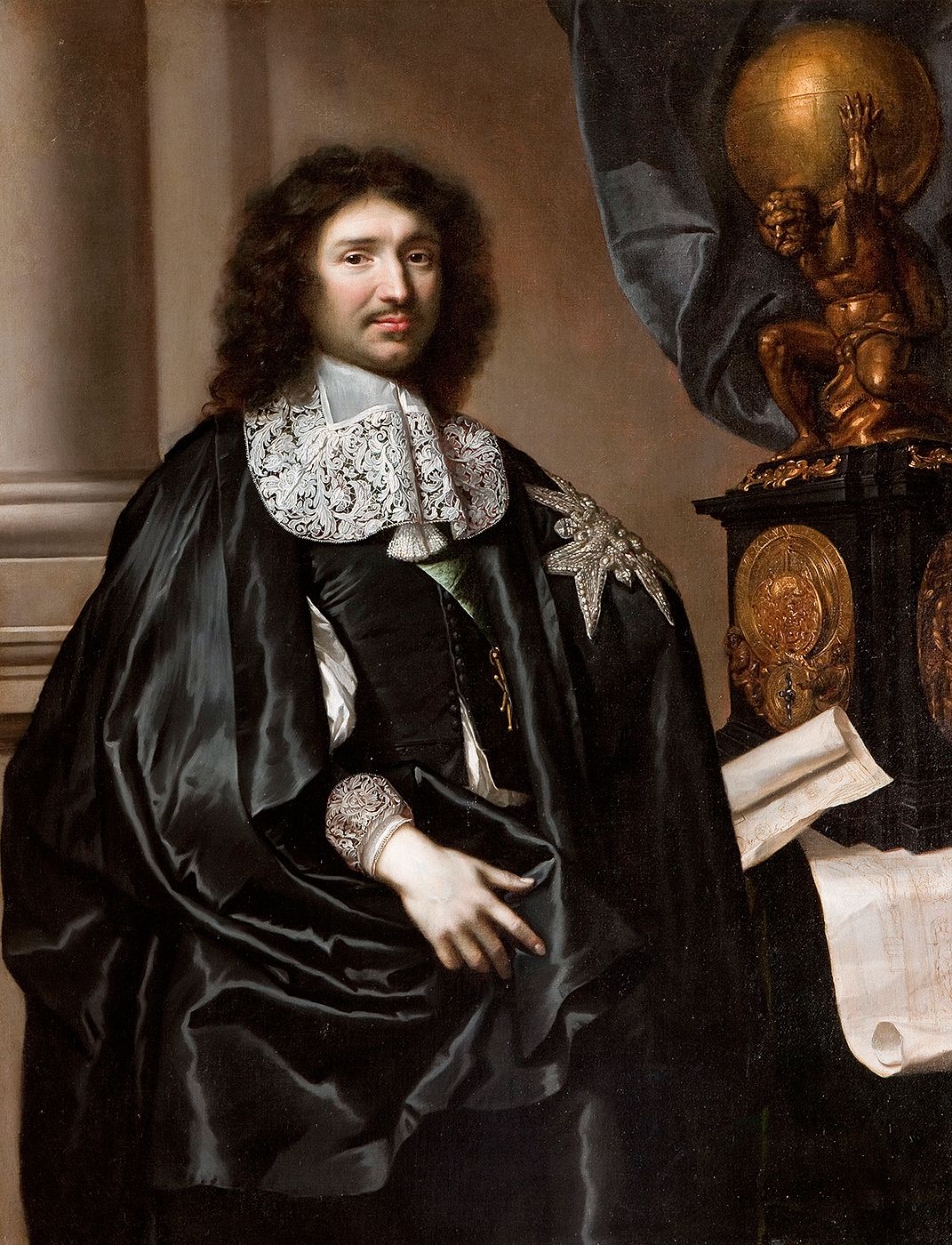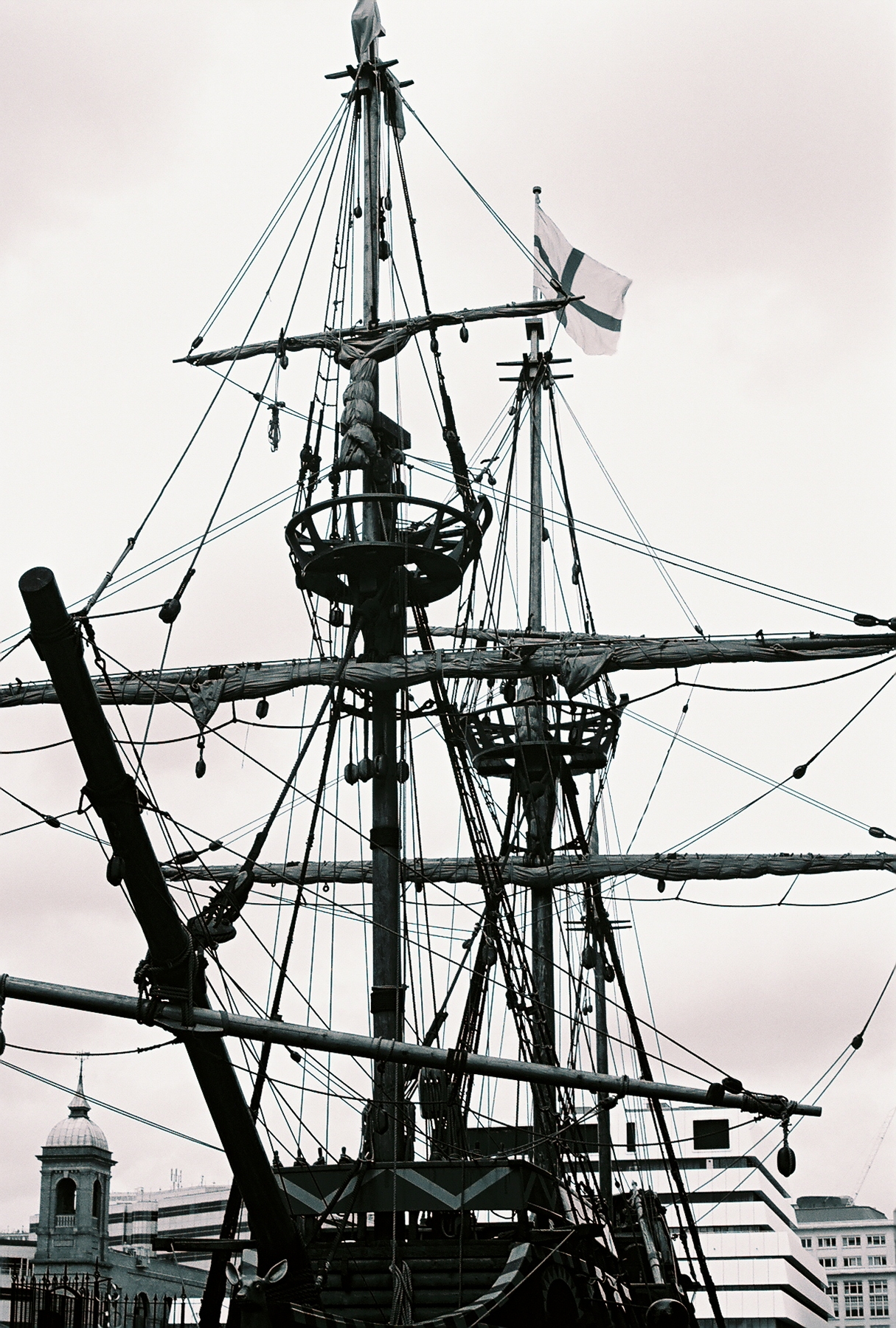|
Arsenal De Rochefort
The Arsenal de Rochefort was a French naval base and dockyard in the town of Rochefort. It was founded in 1665 and it was closed in 1926. In December 1665 Rochefort was chosen by Jean-Baptiste Colbert as a place of "refuge, defense and supply" for the French Navy. Its military harbour was fortified by Louis XIV's Commissary of Fortifications Sébastien Le Prestre de Vauban. Between 1666 and 1669 the King had the ''Corderie Royale'' (then the longest building in Europe) constructed to make cordage for French ships of war. The making of cordage ceased in 1867 and in 1926 the Arsenal de Rochefort was closed. Gallery Porte arsenalRochefort.jpg, Tor 02.JPG, Rochefort Corderie vue sud1.JPG, Fête de la sortie sur la Charente de la coque de la frégate L' Hermione (1).JPG, Forme double Rochefort.jpg, Rochefort radoub porte.JPG, Drapeau de la ville de Rochefort-sur-Mer (18).JPG, Tor 08.JPG, See also * Raid on Rochefort, a 1757 British raid on Rochefort during the Seven Y ... [...More Info...] [...Related Items...] OR: [Wikipedia] [Google] [Baidu] |
Dockyard
A shipyard, also called a dockyard or boatyard, is a place where ships are built and repaired. These can be yachts, military vessels, cruise liners or other cargo or passenger ships. Dockyards are sometimes more associated with maintenance and basing activities than shipyards, which are sometimes associated more with initial construction. The terms are routinely used interchangeably, in part because the evolution of dockyards and shipyards has often caused them to change or merge roles. Countries with large shipbuilding industries include Australia, Brazil, China, Croatia, Denmark, Finland, France, Germany, India, Ireland, Italy, Japan, the Netherlands, Norway, the Philippines, Poland, Romania, Russia, Singapore, South Korea, Sweden, Taiwan, Turkey, the United Arab Emirates, Ukraine, the United Kingdom, the United States and Vietnam. The shipbuilding industry is more fragmented in Europe than in Asia where countries tend to have fewer, larger companies. Many naval vessels ... [...More Info...] [...Related Items...] OR: [Wikipedia] [Google] [Baidu] |
Rochefort, Charente-Maritime
Rochefort ( oc, Ròchafòrt), unofficially Rochefort-sur-Mer (; oc, Ròchafòrt de Mar, link=no) for disambiguation, is a city and communes of France, commune in Southwestern France, a port on the Charente (river), Charente estuary. It is a Subprefectures in France, subprefecture of the Charente-Maritime Departments of France, department, located in the administrative regions of France, administrative region of Nouvelle-Aquitaine (before 2015: Poitou-Charentes). In 2018, it had a population of 23,583. Geography Rochefort lies on the river Charente (river), Charente, close to its outflow into the Atlantic Ocean. It is about 30 km southeast of La Rochelle. Rochefort station has rail connections to La Rochelle, Nantes and Bordeaux. History In December 1665, Rochefort was chosen by Jean-Baptiste Colbert as a place of "refuge, defence and supply" for the French Navy. The Arsenal de Rochefort served as a naval base and dockyard until it closed in 1926. In September 1757, Rochefor ... [...More Info...] [...Related Items...] OR: [Wikipedia] [Google] [Baidu] |
Jean-Baptiste Colbert
Jean-Baptiste Colbert (; 29 August 1619 – 6 September 1683) was a French statesman who served as First Minister of State from 1661 until his death in 1683 under the rule of King Louis XIV. His lasting impact on the organization of the country's politics and markets, known as Colbertism, a doctrine often characterized as a variant of mercantilism, earned him the nickname ''le Grand Colbert'' (; "the Great Colbert"). A native of Reims, he was appointed Intendant of Finances on 4 May 1661. Colbert took over as Controller-General of Finances, a newly elevated position, in the aftermath of the arrest of Nicolas Fouquet for embezzlement, an event that led to the abolishment of the office of Superintendent of Finances. He worked to develop the domestic economy by raising tariffs and encouraging major public works projects, as well as to ensure that the French East India Company had access to foreign markets, so that they could always obtain coffee, cotton, dyewoods, fur, pepper, ... [...More Info...] [...Related Items...] OR: [Wikipedia] [Google] [Baidu] |
French Navy
The French Navy (french: Marine nationale, lit=National Navy), informally , is the maritime arm of the French Armed Forces and one of the five military service branches of France. It is among the largest and most powerful naval forces in the world, ranking seventh in combined fleet tonnage and fifth in number of naval vessels. The French Navy is one of eight naval forces currently operating fixed-wing aircraft carriers,Along with the U.S., U.K., China, Russia, Italy, India and Spain with its flagship being the only nuclear-powered aircraft carrier outside the United States Navy, and one of two non-American vessels to use catapults to launch aircraft. Founded in the 17th century, the French Navy is one of the oldest navies still in continual service, with precursors dating back to the Middle Ages. It has taken part in key events in French history, including the Napoleonic Wars and both world wars, and played a critical role in establishing and securing the French colonial ... [...More Info...] [...Related Items...] OR: [Wikipedia] [Google] [Baidu] |
Louis XIV
, house = Bourbon , father = Louis XIII , mother = Anne of Austria , birth_date = , birth_place = Château de Saint-Germain-en-Laye, Saint-Germain-en-Laye, France , death_date = , death_place = Palace of Versailles, Versailles, France , burial_date = 9 September 1715 , burial_place = Basilica of Saint-Denis , religion = Catholicism (Gallican Rite) , signature = Louis XIV Signature.svg Louis XIV (Louis Dieudonné; 5 September 16381 September 1715), also known as Louis the Great () or the Sun King (), was King of France from 14 May 1643 until his death in 1715. His reign of 72 years and 110 days is the longest of any sovereign in history whose date is verifiable. Although Louis XIV's France was emblematic of the age of absolutism in Europe, the King surrounded himself with a variety of significant political, military, and cultural figures, such as Bossuet, Colbert, Le Brun, Le Nôtre, Lully, Mazarin, Molière, Racine, Turenne, ... [...More Info...] [...Related Items...] OR: [Wikipedia] [Google] [Baidu] |
Sébastien Le Prestre De Vauban
Sébastien Le Prestre de Vauban, Seigneur de Vauban, later Marquis de Vauban (baptised 15 May 163330 March 1707), commonly referred to as ''Vauban'' (), was a French military engineer who worked under Louis XIV. He is generally considered the greatest engineer of his time, and one of the most important in European military history. His principles for fortifications were widely used for nearly 100 years, while aspects of his offensive tactics remained in use until the mid-twentieth century. He viewed civilian infrastructure as closely connected to military effectiveness and worked on many of France's major ports, as well as projects like the Canal de la Bruche, which remain in use today. He founded the , whose curriculum was based on his publications on engineering design, strategy and training. His economic tract, , used statistics in support of his arguments, making it a precursor of modern economics. Later destroyed by royal decree, it contained radical proposals for a more ... [...More Info...] [...Related Items...] OR: [Wikipedia] [Google] [Baidu] |
Corderie Royale
The ''Corderie Royale International de la mer'' is a vast museum complex located in the heart of the maritime Arsenal de Rochefort. The building built in 1666 has been classified as a historic monument since 1967, and currently a candidate for inscription on the UNESCO World Heritage List. Since 1986, the part open to visitors has permanent and temporary exhibitions dedicated to the maritime world and the history of the Arsenal de Rochefort. Presentation The site of the Corderie Royal, home to the International Sea Centre, is a vast museum space that is part of the Arsenal de Rochefort (Grand Arsenal) in Rochefort, France, the city's historic, cultural and tourist landmark, which also includes the ''Musée National de la Marine'' (National Naval Museum), the construction site of the replica of the frigate ''Hermione'', and the renovation project of the Office of the Commissioner of the Navy on Rochefort's food wharf. It is the city's busiest museum site, receiving more than 50, ... [...More Info...] [...Related Items...] OR: [Wikipedia] [Google] [Baidu] |
Rigging
Rigging comprises the system of ropes, cables and chains, which support a sailing ship or sail boat's masts—''standing rigging'', including shrouds and stays—and which adjust the position of the vessel's sails and spars to which they are attached—the ''running rigging'', including halyards, braces, sheets and vangs. Etymology According to the Encyclopædia Britannica Eleventh Edition "rigging" derives from Anglo-Saxon ''wrigan'' or ''wringing'', "to clothe". The same source points out that "rigging" a sailing vessel refers to putting all the components in place to allow it to function, including the masts, spars, sails and the rigging. Types of rigging Rigging is divided into two classes, ''standing'', which supports the mast (and bowsprit), and ''running'', which controls the orientation of the sails and their degree of reefing. Configurations differ for each type of rigging, between ''fore-and-aft rigged'' vessels and ''square-rigged'' vessels. Standing Standin ... [...More Info...] [...Related Items...] OR: [Wikipedia] [Google] [Baidu] |
Warship
A warship or combatant ship is a naval ship that is built and primarily intended for naval warfare. Usually they belong to the armed forces of a state. As well as being armed, warships are designed to withstand damage and are usually faster and more maneuverable than merchant ships. Unlike a merchant ship, which carries cargo, a warship typically carries only weapons, ammunition and supplies for its crew. Warships usually belong to a navy, though they have also been operated by individuals, cooperatives and corporations. In wartime, the distinction between warships and merchant ships is often blurred. In war, merchant ships are often armed and used as auxiliary warships, such as the Q-ships of the First World War and the armed merchant cruisers of the Second World War. Until the 17th century it was common for merchant ships to be pressed into naval service and not unusual for more than half a fleet to be composed of merchant ships. Until the threat of piracy subsided in the ... [...More Info...] [...Related Items...] OR: [Wikipedia] [Google] [Baidu] |
Raid On Rochefort
The Raid on Rochefort (or Descent on Rochefort) was a British amphibious attempt to capture the French Atlantic port of Rochefort in September 1757 during the Seven Years' War. The raid pioneered a new tactic of "descents" on the French coast, championed by William Pitt who had taken office a few months earlier. After a number of delays the expedition reached the French coast, capturing the offshore island of Île d'Aix. With the army commander Sir John Mordaunt refusing to attempt a landing, the force sailed for home. The raid ended in failure, but it was followed by several similar operations in the subsequent years. Background Britain had begun the Seven Years' War badly, losing several battles to the French in North America, as well as seeing their major Mediterranean naval base of Menorca captured by a French force while Britain's ally Hanover was faced with a French invasion. In the wake of these losses, a new government including William Pitt came to office in J ... [...More Info...] [...Related Items...] OR: [Wikipedia] [Google] [Baidu] |
Seven Years' War
The Seven Years' War (1756–1763) was a global conflict that involved most of the European Great Powers, and was fought primarily in Europe, the Americas, and Asia-Pacific. Other concurrent conflicts include the French and Indian War (1754–1763), the Carnatic Wars and the Anglo-Spanish War (1762–1763). The opposing alliances were led by Great Britain and France respectively, both seeking to establish global pre-eminence at the expense of the other. Along with Spain, France fought Britain both in Europe and overseas with land-based armies and naval forces, while Britain's ally Prussia sought territorial expansion in Europe and consolidation of its power. Long-standing colonial rivalries pitting Britain against France and Spain in North America and the West Indies were fought on a grand scale with consequential results. Prussia sought greater influence in the German states, while Austria wanted to regain Silesia, captured by Prussia in the previous war, and to contain Pruss ... [...More Info...] [...Related Items...] OR: [Wikipedia] [Google] [Baidu] |
Installations Of The French Navy
Installation may refer to: * Installation (computer programs) Installation (or setup) of a computer program (including device drivers and plugins), is the act of making the program ready for execution. Installation refers to the particular configuration of a software or hardware with a view to making it us ... * Installation, work of installation art * Installation, military base * Installation, into an office, especially a religious ( Installation (Christianity)) or political one {{disambig ... [...More Info...] [...Related Items...] OR: [Wikipedia] [Google] [Baidu] |






.jpg)